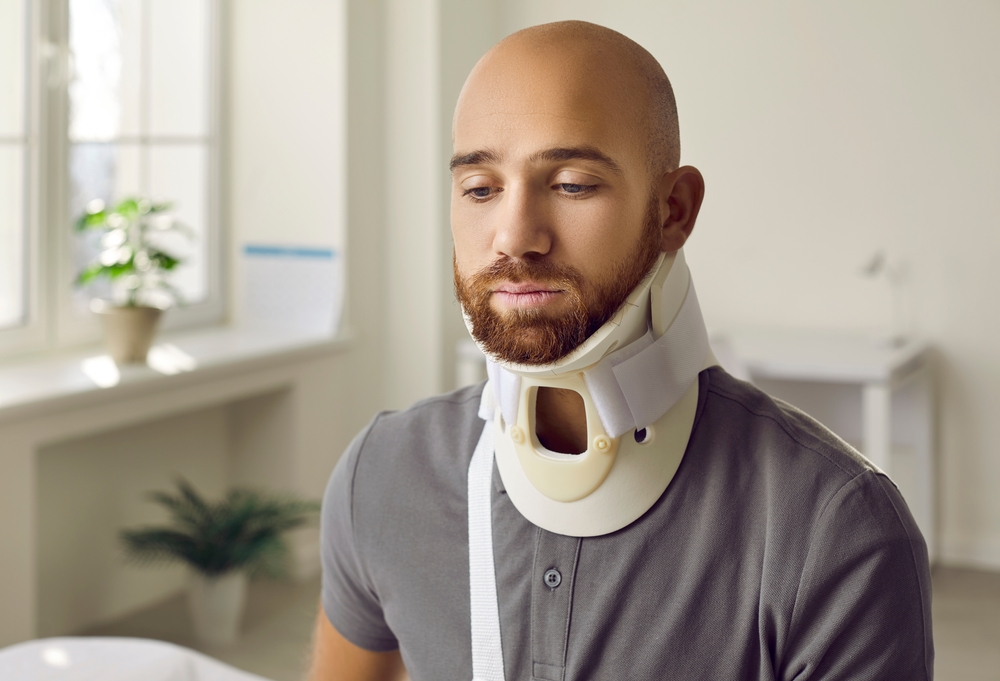Anterior cervical discectomy and fusion recovery usually takes several weeks to a few months, depending on your overall health and how your body heals. Most patients can return to light daily activities within a few weeks, while full recovery—including bone fusion and improved mobility—may take up to three months or more. Pain and stiffness are common at first but typically improve over time with proper care.
Dr. Alexander Taghva, a board-certified neurosurgeon in Mission Viejo, CA, understands that recovery can feel overwhelming at times. He takes the time to walk each patient through what to expect, offering support, clear answers, and reassurance every step of the way.

ACDF Recovery Stages
| Recovery Stage | Time Frame | What to Expect |
|---|---|---|
| Stage 1: Hospital & Immediate Recovery | Day 1–3 | Pain managed with medication, rest, hospital stay if needed |
| Stage 2: Early Healing at Home | Week 1–2 | Limited activity, neck support if needed, gradual movement |
| Stage 3: Getting Back to Routine | Week 3–6 | Begin light activities, possible return to work, start physical therapy |
| Stage 4: Regaining Strength & Flexibility | Month 2–3 | Improved mobility, resume most daily tasks, ongoing therapy if prescribed |
| Stage 5: Long-Term Recovery & Results | Month 4 and beyond | Stable spine, long-term pain relief, return to regular activity levels |
What Happens Right After Your Anterior Cervical Discectomy and Fusion Surgery
After your ACDF procedure, you will typically spend a short time in the hospital so your care team can monitor your initial recovery. This period is focused on pain control, incision care, and making sure you are stable enough to return home.
How Long Will You Stay in the Hospital After ACDF Surgery?
Most patients are discharged within 24 hours of surgery, although a short hospital stay of one to two days may be recommended if complications arise or additional monitoring is needed. Your vital signs, ability to walk, and ability to tolerate food and medications will be assessed before discharge.
Initial Pain Management Strategies
You can expect some degree of discomfort in your neck, throat, and possibly your shoulders. Pain is typically managed with a combination of prescription pain relievers, muscle relaxants, and anti-inflammatory medications. Ice packs and careful positioning can also help ease discomfort around the incision site.

The First Two Weeks After Your ACDF Neck Surgery Procedure
The first two weeks of recovery are critical for managing pain, limiting strain, and supporting your spine as it begins to heal. Dr. Taghva may recommend wearing a cervical collar or soft neck brace during this time.
Managing Neck and Arm Pain Comfortably at Home
It’s normal to experience some lingering neck pain or numbness in the arms due to nerve healing. Use medications as prescribed, limit your movements, and avoid lifting anything heavier than a few pounds. Be mindful of posture and avoid bending your neck forward for extended periods.
Tips for Sleeping and Resting After ACDF
Sleep with your head elevated using pillows or a reclining bed to reduce strain on your neck. Avoid sleeping on your stomach. Many patients find that sleeping in a recliner or propped-up position is more comfortable during the initial days after surgery.
Daily Activity Limitations and Restrictions to Keep Your Recovery on Track
During the early healing stage, avoid driving, strenuous activity, and any movement that twists or overextends the neck. You should also avoid lifting, pushing, or pulling anything over 10 pounds. Stick to short walks to improve circulation and prevent stiffness.
Patients Testimonials
Weeks 3–6 of Your Cervical Spine Fusion Recovery
As the initial inflammation begins to subside, most patients find they can start doing more, though restrictions still apply. The focus during this period is on gradual reintegration into light daily activities.
Gradually Increasing Your Activities Safely
You may begin to walk longer distances and resume light housework, though lifting and vigorous exercise should still be avoided. Some patients start tapering off their use of a neck brace, depending on healing progress. Always follow your surgeon’s personalized guidance.
Returning to Work—What to Expect and How to Prepare
Desk workers may return to work within 3 to 4 weeks, provided they can avoid prolonged sitting or neck strain. Jobs that require physical labor will require more time off and medical clearance. Ergonomic adjustments, such as an elevated monitor or lumbar support, can support healing.
Physical Therapy—Why It’s Important for Your Recovery
Physical therapy usually begins within a few weeks of surgery to restore flexibility and strengthen supporting muscles. Exercises will be introduced in phases to avoid disrupting the fusion site. This therapy plays a critical role in reducing pain and preventing long-term stiffness.

Best Neurosurgeon in Orange County
Dr. Taghva specializes in the treatment of neck pain, low back pain, sciatica, brain tumors, Parkinson’s disease, as well as other conditions requiring brain or spine surgery.

Long-Term Recovery and Life After Anterior Cervical Discectomy and Fusion Surgery
As you move into months two and three, your recovery becomes more about regaining function and improving your quality of life. By now, many patients experience noticeable relief from the symptoms that prompted the surgery.
When Will You Notice Improved Neck and Arm Mobility After ACDF Surgery?
Some patients feel improvement in symptoms such as numbness or arm pain within days, but full nerve healing may take weeks to months. Mobility increases gradually and should be accompanied by consistent physical therapy and activity modifications.
Tips for Maintaining Spine Health Long-Term
- Maintain good posture when sitting and standing
- Use proper ergonomics at your workstation
- Avoid heavy lifting or sudden movements
- Incorporate low-impact exercises such as swimming or walking
- Follow through with your physical therapy plan
These habits can help support your cervical spine and reduce the risk of future issues.
What to Expect at Follow-up Appointments with Dr. Taghva
Regular check-ins are scheduled to ensure proper healing. Imaging tests may be used to confirm bone fusion. Your incision will be evaluated, and your progress will be monitored to ensure there are no signs of complications such as infection or nerve damage.

Common Questions About Life After ACDF Surgery
You should avoid driving until you are no longer taking prescription pain medications and can move your neck freely without discomfort. Most patients can resume short drives within 2 to 4 weeks. Air travel should be avoided until cleared by your surgeon.
Low-impact exercises such as walking, light stretching, and stationary biking are generally safe after the first few weeks. Avoid contact sports, heavy lifting, and any activity that involves jarring motions until fully healed and cleared by your doctor.
Most patients experience long-lasting relief from symptoms of spinal cord compression and cervical stenosis. Success rates for ACDF surgery range from 85% to 95% over a 10-year follow-up, making it a reliable option for long-term improvement.
Sticking to your postoperative care plan, attending follow-up appointments, taking medications as directed, and engaging in approved physical activity all help support healing. Getting enough sleep, staying hydrated, and eating nutrient-rich foods can also contribute to recovery.
Yes. Physical therapy is a key component of the recovery process. It helps strengthen the muscles supporting your spine, improves range of motion, and helps minimize post-surgical stiffness.
Live Pain-Free: Schedule Your Consultation with Dr. Alexander Taghva Today
Recovery after anterior cervical discectomy and fusion surgery doesn’t happen overnight, but with the right support, most patients enjoy excellent long-term results. Whether you’re struggling with neck pain, numbness, or spinal cord compression, Dr. Taghva provides expert care tailored to your needs.
Ready to take the first step toward relief? Schedule a consultation today to learn more about cervical spine surgery and your personalized recovery plan.
